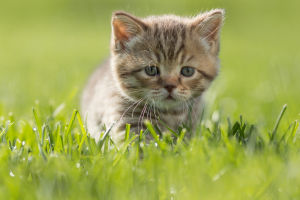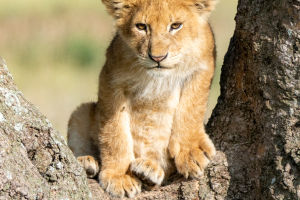In our daily lives, cats are often depicted as keen hunters, renowned for their exceptional vision and swift reaction times.
However, did you know that cats are near-sighted? This revelation might offer a fresh perspective on these endearing creatures.
Here, Lykkers, we will delve into this intriguing phenomenon, exploring its implications on feline behavior and lifestyle.
First and foremost, let us grasp the concept of myopia. Myopia, commonly known as nearsightedness or shortsightedness, is a visual impairment where distant objects appear blurry while nearby objects remain clear.
This happens when light converges in front of the retina instead of directly onto it. While myopia is a prevalent vision issue among humans, it may come as a surprise that cats can also experience similar ocular challenges.
Research indicates that cats' visual system shares similarities with humans in certain aspects while differing in others.
The structure of cats' eyes endows them with exceptional visual prowess, particularly during nocturnal hunts, relying heavily on their light sensitivity and the unique configuration of their retinas. However, alongside these remarkable abilities, cats' eyes harbor limitations, including their susceptibility to myopia.
Studies have revealed that cats primarily suffer from myopia when attempting to focus on distant objects. Despite their clear vision at close range, distant scenes often appear blurred to them.
This observation elucidates why cats exhibit a preference for approaching their prey closely during hunts, rather than tracking them from afar. They excel in utilizing their stealth tactics and executing close-range attacks to secure their prey, rather than relying on long-range visual cues.
The myopia prevalent in cats also exerts a significant influence on their everyday behavior. For instance, in indoor settings, cats may opt to remain close to objects to obtain a clearer view rather than moving away from them.
This inclination also elucidates why they frequently perch on furniture, windowsills, or elevated surfaces, facilitating better surveillance of their surroundings. Moreover, cats may exhibit diminished reactions to distant moving objects due to the challenge of discerning distant stimuli.
Despite their myopic condition, cats continue to excel as hunters and companions. Possessing an array of other acute senses and instincts, they adeptly navigate the wild and forge close bonds with humans.
Surprisingly, their myopia may even serve as one of their distinctive and intriguing attributes, fostering greater intrigue and fascination towards these enigmatic creatures.
In conclusion, cats' myopia offers an intriguing vantage point, enabling us to gain deeper insights into these captivating animals.
While their vision may be constrained in certain aspects, it does not diminish their significance as cherished companions and integral members of our families. Let us persevere in exploring and cherishing these delightful companions who share our lives, unearthing the myriad wonders they hold!


